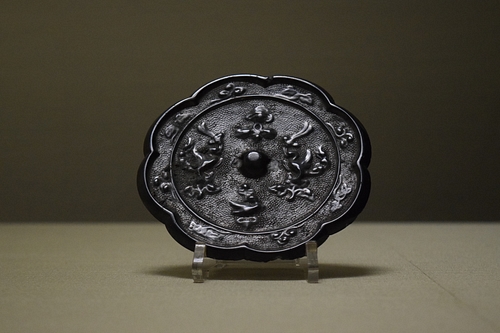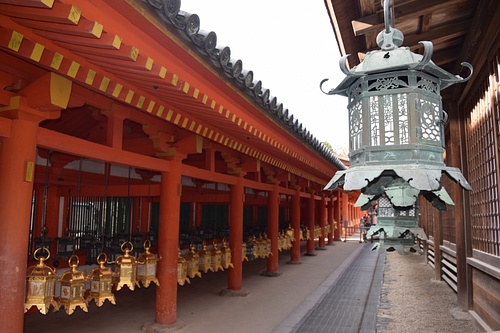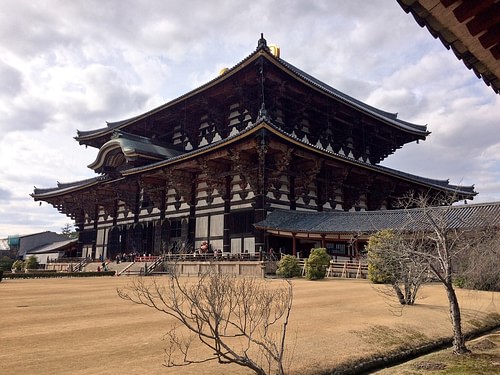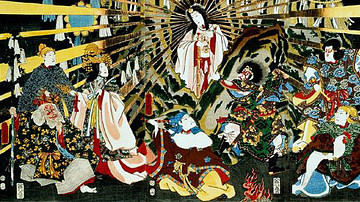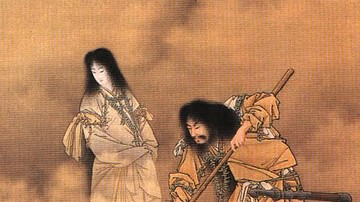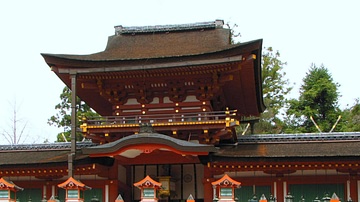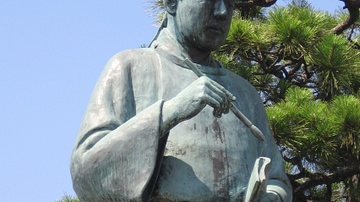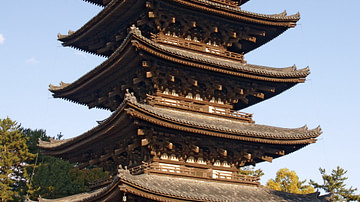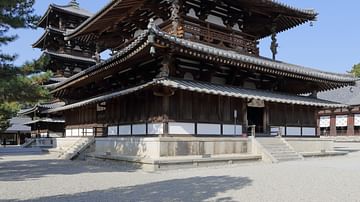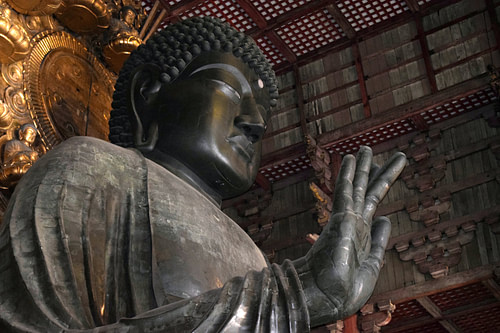
The Nara Period (Nara Jidai) of ancient Japan (710-794 CE), so called because for most of that time the capital was located at Nara, then known as Heijokyo, was a short period of transition prior to the significant Heian Period. Despite the period's brevity it still managed to produce arguably the most famous works of Japanese literature ever written and some of the most important temples still in use today including at Todaiji, the largest wooden building in the world at that time, which still houses the largest bronze statue of Buddha ever made.
Historical Overview
Nara, or more correctly Heijokyo, as it was known then, was made the capital of Japan from 710 to 784 CE, after which time it was relocated to Nagaokakyo. The previous capital was Fujiwara-kyo, but Nara had the advantage of being more centrally placed, located 30 kilometres south of Kyoto. Later historians gave the capital's name to the period 710 to 794 CE even if for the last decade it was no longer the most important Japanese city. The Nara Period followed on from the Kofun Period (c. 250-538 CE) and Asuka Period (538-710 CE), together sometimes referred to as the Yamato Period. Japan had increased its diplomatic relations with its powerful neighbours China and Korea, accepted the Buddhist religion, and absorbed some useful cultural advancements. This process continued in the Nara Period.
Nara was built on the Chinese model of Chang-an, the Tang capital and so had a regular and well-defined grid layout, two symmetrical halves, and buildings familiar to Chinese architecture. A university dedicated to the Confucian tradition was established, a sprawling royal palace was built and the state bureaucracy was expanded to some 7,000 civil servants. The total population of Nara may have been as high as 200,000 by the end of the period.
Control of the central government over the provinces was increased by a heightened military presence throughout the islands of Japan. This did not prevent a major rebellion in 740 CE led by the Fujiwara exile Hirotsugu and supported by the Hayato minority based in southern Kyushu who resented the Yamato clan's dominance of the government and its attempts to 'civilise' under-developed regions. Emperor Shomu (r. 724-749 CE) raised an army of 17,000 men, quashed the rebel army inside of two months and executed Hirotsugu.
For the ordinary populace, especially those in rural areas (90%), poverty, or just living above it, continued to be the norm. Agriculture still depended on primitive tools, not enough land was prepared for crops, and irrigation techniques were insufficient to prevent frequent crop failures and outbreaks of famine. In 743 CE a law attempted to encourage land clearance for agriculture by guaranteeing farmers the right to pass on their cleared land to their descendants, but most preferred the greater security of working for landed aristocrats.
To make matters worse for Japan's already strained rural communities, there were smallpox epidemics in 735 and 737 CE which historians calculate reduced the county's population by 25-35%. The lot of the Japanese peasant was not helped by excessive taxation, largely designed to fund Emperor Shomu's temple building projects (see below) in the first half of the 8th century CE in which he was aided by the Buddhist priest Gyogi. The emperor was a keen convert to Buddhism, especially following the various disasters during his reign, and he had the bright idea to build a temple in every province in the hope this might improve the country's fortunes. In contrast to the peasantry, an ever-increasing number of religious sites and aristocrats were given tax immunity, and the government, happily spending away on temples, struggled to balance its books throughout the period. The court was also beset by internal conflicts for favours and positions amongst the aristocracy which resulted in Emperor Kammu (r. 781-806 CE) moving the capital to Heiankyo in 794 CE. This was the beginning of the Heian Period which would last into the 12th century CE.
The period is notable for having three reigning empresses: Gemmei (r. 707-715 CE), Gensho (r. 715-724 CE), and Koken in two spells: 749-758 CE and, then with the title Shotoku, 764-770 CE. Shotoku had a notorious affair with a Buddhist priest called Dokyo, and she even named him as her successor, but the court rejected this choice and Dokyo was exiled. It would be another 800 years before a woman sat on the Japanese imperial throne again. Their reigns are perhaps indicative of a slightly better lot for women in wider society, certainly in comparison to contemporary China. In Nara Japan, for example, women could own land.
Nara Literature
The Nara Period would see a flourishing particularly in the field of literature. The Kojiki ('Record of Ancient Things') was compiled in 712 CE by the court scholar Ono Yasumaro, who drew on earlier sources, mostly genealogies of powerful clans. Then the Nihon Shoki ('Chronicle of Japan' and also known as the Nihongi), written by a committee of court scholars, came in 720 CE which sought to redress the bias many clans thought the earlier work had given to the Yamato clan. These works, then, describe the 'Age of the Gods' when the world was created and they ruled before withdrawing to leave humanity to rule itself. They also gave the imperial line a direct descent from the gods - the original purpose of their composition.
Other important works included the Kaifuso poem anthology of 751 CE and the Manyoshu or 'Collection of 10,000 Leaves'. Written c. 760 CE, it is another anthology of 4,500 poems covering all manner of topics. Finally, a series of local chronicles, or Fudoki, were commissioned in 713 CE to record local kami (spirits) and associated legends in the various provinces.
Nara Temples
Todaiji
Another productive area during the period was religious architecture. The Buddhist temple of Todaiji was founded near Nara in 752 CE, east of the imperial palace, hence its name 'Great Eastern Temple'. The site boasted the largest wooden building in the world at that time. The Great Buddha Hall or Daibutsuden had to be big because it contained a 15-metre (49 ft) high bronze statue of the seated Buddha, the largest such statue in the world and weighing in at around 500 tons. The Todaiji was partially destroyed in a fire during the Genpei War (1180-1185 CE) but was restored to its former glory, albeit on a slightly smaller scale but still housing the huge and partially restored Buddha statue and still an impressive 48 metres (157 ft) high and 57 metres (187 ft) long.
Other buildings at Todaiji include the Nandaimon (Great South Gate), Shoro (Belfry), Nigatsudo (Second Month Hall), Hokke-do (Third Month Hall), Shoso-in (Treasury) and two 100-metre (328 ft) tall pagodas, the latter pair were unfortunately destroyed by an earthquake and never rebuilt. A large bronze octagonal lantern still standing between the Daibutsuden and Chumon Gate dates to the founding of the temple. The Todaiji is a UNESCO World Heritage Site.
Another important Nara Period temple is the Kasuga Taisha, a Shinto shrine set in a forest near Nara, which was officially founded in 768 CE, although historians prefer a date of 710 CE. It was established by the powerful Fujiwara clan after, as the legend goes, a deity appeared at the site riding a deer, which also explains why deer are left to roam freely at the temple even today. The site includes a shrine dedicated to the founding ancestor of the Fujiwara. The pathway to the shrine is lined with stone lanterns donated by worshippers over the centuries. Many of these 2,000 lanterns are decorated with an image of a deer. Another 1,000 bronze lanterns hang around the shrines and gates at the site. All the lanterns at Kasuga are lit in a spectacular ceremony held each February and August. The Kasuga is also a UNESCO World Heritage Site.
This content was made possible with generous support from the Great Britain Sasakawa Foundation.
